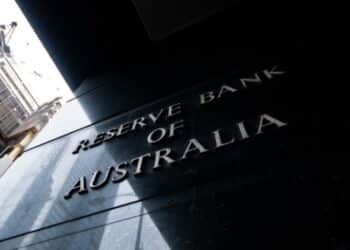The Reserve Bank of Australia (RBA) has broken its streak of on-hold decisions in the face of persistent inflation, with the central bank now anticipating slower progress towards its target range for headline inflation of 2 to 3 per cent.
At its November meeting, the RBA actioned its 13th hike since commencing its tightening cycle in May 2022, lifting the official cash rate by 25 basis points to 4.35 per cent after remaining on hold in July, August, September and October.
“Inflation in Australia has passed its peak but is still too high and is proving more persistent than expected a few months ago,” RBA governor Michele Bullock said.
“The latest reading on CPI inflation indicates that while goods price inflation has eased further, the prices of many services are continuing to rise briskly.”
The Consumer Price Index (CPI) lifted 1.2 per cent during the September quarter, according to the Australian Bureau of Statistics (ABS), resulting in an annual increase of 5.4 per cent.
According to the RBA’s revised forecasts, CPI inflation is now expected to fall to around 3.5 per cent by the end of 2024 and be “at the top of the target range” by the end of 2025.
Previously, the central bank predicted that CPI inflation would fall to 3.3 per cent at the end of 2024 and 2.8 per cent at the end of 2025.
“The board judged an increase in interest rates was warranted today to be more assured that inflation would return to target in a reasonable timeframe,” said Ms Bullock.
The RBA governor warned that the updated information received since the RBA’s August meeting suggests that “the risk of inflation remaining higher for longer has increased”.
“While the economy is experiencing a period of below-trend growth, it has been stronger than expected over the first half of the year. Underlying inflation was higher than expected at the time of the August forecasts, including across a broad range of services,” she said.
“Conditions in the labour market have eased but they remain tight. Housing prices are continuing to rise across the country.”
Since its October meeting, the RBA has added “the implications of the conflicts abroad” to its list of uncertainties around the outlook, alongside longstanding issues such as services price inflation, the lags in monetary policy, and the outlook for household consumption.
Meanwhile, the suggestion that “some further tightening of monetary policy may be required” has been replaced in the post-meeting statement. Instead, Ms Bullock said: “Whether further tightening of monetary policy is required to ensure that inflation returns to target in a reasonable timeframe will depend upon the data and the evolving assessment of risks”.
Commonwealth Bank head of Australian economics Gareth Aird noted that, while the RBA retained a tightening bias, it has softened “a little”.
“We interpret the change in words today to be in the dovish direction,” he said.
Mr Aird suggested that upside surprises on economic data, and in particular inflation, would be required for the RBA to raise the cash rate again.
“Our base case sees the RBA board leaving monetary policy on hold from here. And we have pencilled in September 2024 for the start of a monetary policy easing cycle,” he said.
“But we acknowledge the risk in the short run sits with another interest rate increase, particularly given the RBA retains a tightening bias. The upshot is that markets will continue to price the near term chance of another rate rise.”
If the RBA were to hike again, Mr Aird said that a February 2024 move was most likely, since the central bank would have the Q4 23 CPI as well as updated economic forecasts.
Westpac chief economist and former RBA assistant governor Luci Ellis noted that the RBA’s November decision represented a break from recent meetings in which the central bank appeared “comfortable to hold steady and monitor the evolving situation”.
“Given its low tolerance for upside surprises, a stronger inflation outlook and some unexpected resilience in the real economy has induced the board to act,” she said.
Ms Ellis said that Westpac does not expect the RBA will follow up November’s rate hike with another increase in December, arguing that “there is not enough new information between now and the December meeting to drive a change in view”.
“Given the upgraded inflation forecasts and lower unemployment forecast, though, they are likely to have even less tolerance for upside surprises than they indicated in recent communication. So while a December move is unlikely, it is more likely that [the] February meeting would become ‘live’ if the inflation outlook continues to lift,” she added.
But the head of macroeconomic forecasting at Oxford Economics, Sean Langcake, went one step further, stating he expects the RBA to move again to achieve its inflation objective.
“If the RBA are worried enough about the inflation outlook to hike rates, a single 25 basis point increase is unlikely to assuage their concerns,” he said.
“The board may opt to wait for the next set of inflation data and raise rates in February. But a strong WPI print next Wednesday will likely be enough to ensure another hike in December.”







